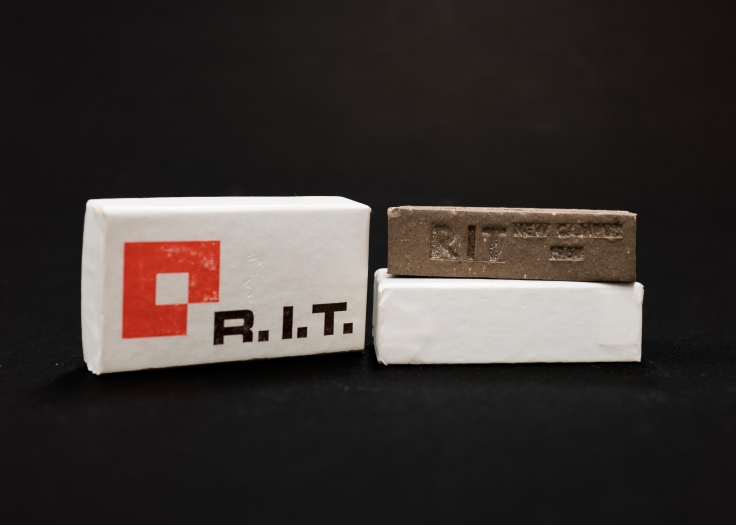An update to the RIT logo was made during the summer of 1967. The logo itself was designed by R. Roger Remington and was considered a modern graphic mark that fit all the design requirements: it was easy to rescale, recognizable with alternate colors, and incredibly simple. Unfortunately, the “square-notch” logo was not well-received by students. An article featured in the November 3rd, 1967 issue of the RIT Reporter (upper left) criticized the change in logo for not including the students in the decision, stating that, “RIT is the student body; for without the students there would be no life at RIT.”
Apart from the update to the RIT graphic standards and identity manual, there was no official statement made explaining the symbolism behind the new logo design. RIT Reporter featured numerous political cartoons, such as the one pictured to the left, which scrutinized the unknown origin and design of the logo. There was motion made to repeal the new logo that reached the RIT Senate not long after the design’s initial adoption. The front-page article shown in the upper right and the continuation article to the right cover the results of the Senate hearing. Remington himself was present to defend the logo and made his case using other examples of logos within industry. With the design of the logo explained, the Senate turned down the repeal and Remington’s logo remained official, seeing continued use until its re-design in 1973.











